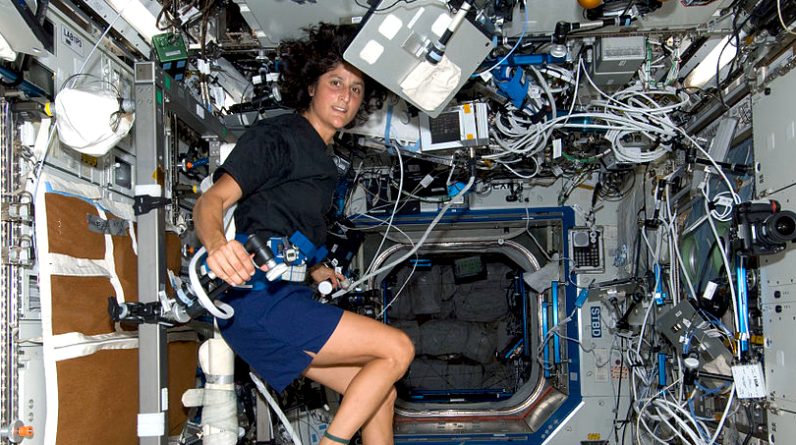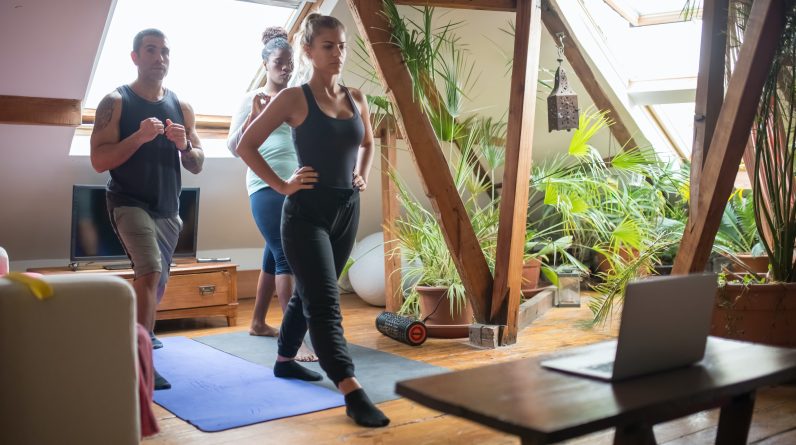
Cardio-Fitness for Astronauts: Maintaining Optimal Health in Space
Space travel poses unique challenges to human health and well-being, and maintaining cardio-fitness is crucial for astronauts during their missions. In the microgravity environment of space, the human body undergoes significant physiological changes that can impact cardiovascular health. In this article, we will explore the importance of cardio-fitness for astronauts and discuss the strategies and exercises employed to ensure their optimal health while in space
The Effects of Microgravity on Cardiovascular Health:
When astronauts venture into space, they experience a microgravity environment that alters the distribution of bodily fluids, including blood. This fluid shift causes cardiovascular deconditioning, as the heart no longer needs to work as hard to pump blood against gravity. Over time, this can lead to a decrease in cardiac muscle mass and strength, as well as a reduction in overall cardiovascular fitness.
Importance of Cardio-Fitness in Space:
Maintaining cardio-fitness is crucial for astronauts because a strong cardiovascular system ensures efficient oxygen delivery to the body’s tissues, including the brain and muscles. It also plays a significant role in countering the effects of microgravity, such as post-flight orthostatic intolerance (dizziness upon standing) and cardiovascular deconditioning. By focusing on cardio-fitness, astronauts can minimize the risk of adverse health effects and optimize their performance during space missions.
1.Cardiovascular health: In microgravity environments, such as space, the heart doesn’t have to work as hard to pump blood throughout the body compared to Earth’s gravity. This can lead to cardiovascular deconditioning, including a decrease in heart muscle mass and a decline in overall cardiovascular fitness. Engaging in cardiovascular exercise helps maintain and improve heart health, ensuring that the heart remains strong and efficient in pumping oxygenated blood to the muscles and vital organs.
2.Counteracting muscle and bone loss:
Extended stays in space can result in muscle atrophy and bone loss due to the reduced mechanical stress on the body. Cardiovascular exercise, such as running on a treadmill or cycling, helps counteract muscle wasting and bone density loss by stimulating muscle contractions and placing mechanical loads on the bones. Regular cardio workouts help astronauts preserve muscle mass and minimize bone density decline.
3.Enhancing lung function: In the microgravity environment, the absence of gravity’s pull on the body makes it easier to breathe. As a result, lung capacity can decrease over time. Engaging in cardio exercises that increase respiratory rate and demand more oxygen helps maintain and improve lung function, ensuring adequate oxygen exchange and overall respiratory health.
4.Mitigating cardiovascular risks upon return to Earth:
After spending an extended period in space, astronauts can experience cardiovascular challenges upon returning to Earth’s gravity. These challenges include orthostatic intolerance (difficulty in transitioning from lying down to standing) and decreased blood volume. Regular cardiovascular exercise during space missions can help mitigate these risks and facilitate a smoother transition back to Earth’s gravity.
5.Psychological well-being: Living and working in space can be physically and mentally demanding. Exercise, including cardio workouts, has been shown to improve mood, reduce stress, and enhance cognitive function. Regular physical activity promotes the release of endorphins, which can contribute to an astronaut’s overall well-being and help them cope with the challenges and isolation of space travel.
Cardiovascular Exercise in Space:
Astronauts engage in various cardiovascular exercises while in space to counteract the effects of microgravity and maintain their cardio-fitness. These exercises typically include:
1.Aerobic Exercise: Astronauts utilize specially designed exercise equipment such as treadmills, stationary bicycles, and rowing machines to engage in aerobic activities. These exercises help increase heart rate, improve cardiovascular endurance, and stimulate oxygen utilization.
2.Resistance Training: While primarily aimed at maintaining muscle and bone health, resistance training exercises like squats, lunges, and weightlifting also contribute to cardiovascular fitness. They enhance muscle strength, improve circulation, and promote overall cardiovascular health.
3.Interval Training: Interval training involves alternating between high-intensity bursts of exercise and periods of active recovery. Astronauts may perform activities such as sprinting or high-intensity cycling followed by slower-paced exercises. Interval training maximizes cardiovascular benefits in a shorter period, making it an efficient approach for space-based workouts.
Astronauts engage in a variety of cardio exercises to maintain their cardiovascular health while in space.
4.Treadmill:
A specially designed treadmill is used on the International Space Station (ISS). Astronauts secure themselves to the treadmill using harnesses and bungee cords to simulate the downward force of gravity.
5.Stationary Bicycle: Astronauts also have access to stationary bicycles adapted for use in microgravity. These bikes use a system of pedals and flywheels to simulate the resistance and motion of cycling on Earth.
6.ARED (Advanced Resistive Exercise Device): Although primarily used for strength training, ARED also offers a cardio component. It uses vacuum cylinders and adjustable resistance to provide a range of exercises that engage multiple muscle groups simultaneously.
7.Zero-Gravity Running: In addition to treadmill running, astronauts occasionally engage in “zero-gravity running” inside the ISS. They use bungee cords attached to the walls of the space station to simulate the feeling of running by rebounding off the walls.
8.Resistance Training:
Astronauts incorporate resistance exercises such as weightlifting and resistance bands into their workout routines. These exercises can increase heart rate and provide a cardio component while building strength.
It’s worth noting that these exercises are performed in a microgravity environment, which necessitates modifications to traditional workout equipment and techniques. The primary objective is to mitigate the negative effects of prolonged spaceflight on the cardiovascular system and musculoskeletal system.
Monitoring and Assessing Cardio-Fitness:
To ensure astronauts maintain optimal cardio-fitness, NASA and other space agencies closely monitor their cardiovascular health during space missions. This includes regular medical check-ups, electrocardiograms (ECGs), and other diagnostic tests. Additionally, astronauts wear heart rate monitors during exercise sessions to assess their exertion levels and tailor their workouts accordingly.
Maintaining cardio-fitness is of utmost importance for astronauts to counteract the effects of microgravity and preserve their overall health during space missions. By incorporating a combination of aerobic exercises, resistance training, and interval training, astronauts can mitigate cardiovascular deconditioning and ensure efficient oxygen delivery to their bodies. Through continuous monitoring and assessment, space agencies can optimize the exercise routines and protocols for astronauts, further improving their cardiovascular health in space. By prioritizing cardio-fitness, astronauts can not only enhance their performance during missions but also promote their long-term well-being both in space and upon their return to Earth.






